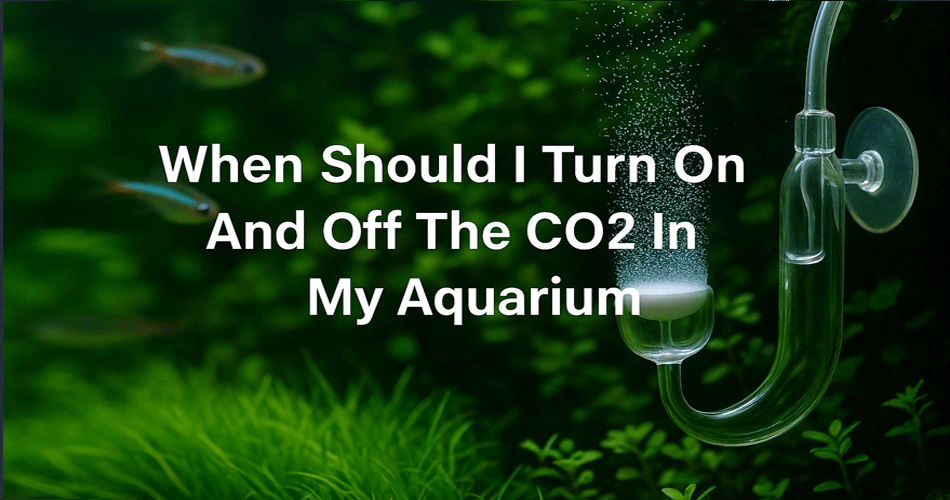When Should I Turn On And Off The Co2 In My Aquarium ? Essential Tips
You should turn on the CO2 in your aquarium during the day. Turn it off at night.
Timing your CO2 correctly is crucial for plant health and fish safety. CO2 is vital for aquatic plants. They need it for photosynthesis. During the day, when the lights are on, plants use CO2 to grow. But at night, plants and fish don’t need it.
In fact, too much CO2 at night can be harmful. It can lower oxygen levels and stress your fish. Knowing when to turn CO2 on and off helps maintain a healthy balance. It ensures your plants thrive and your fish stay safe. Understanding this balance can improve the overall health of your aquarium.
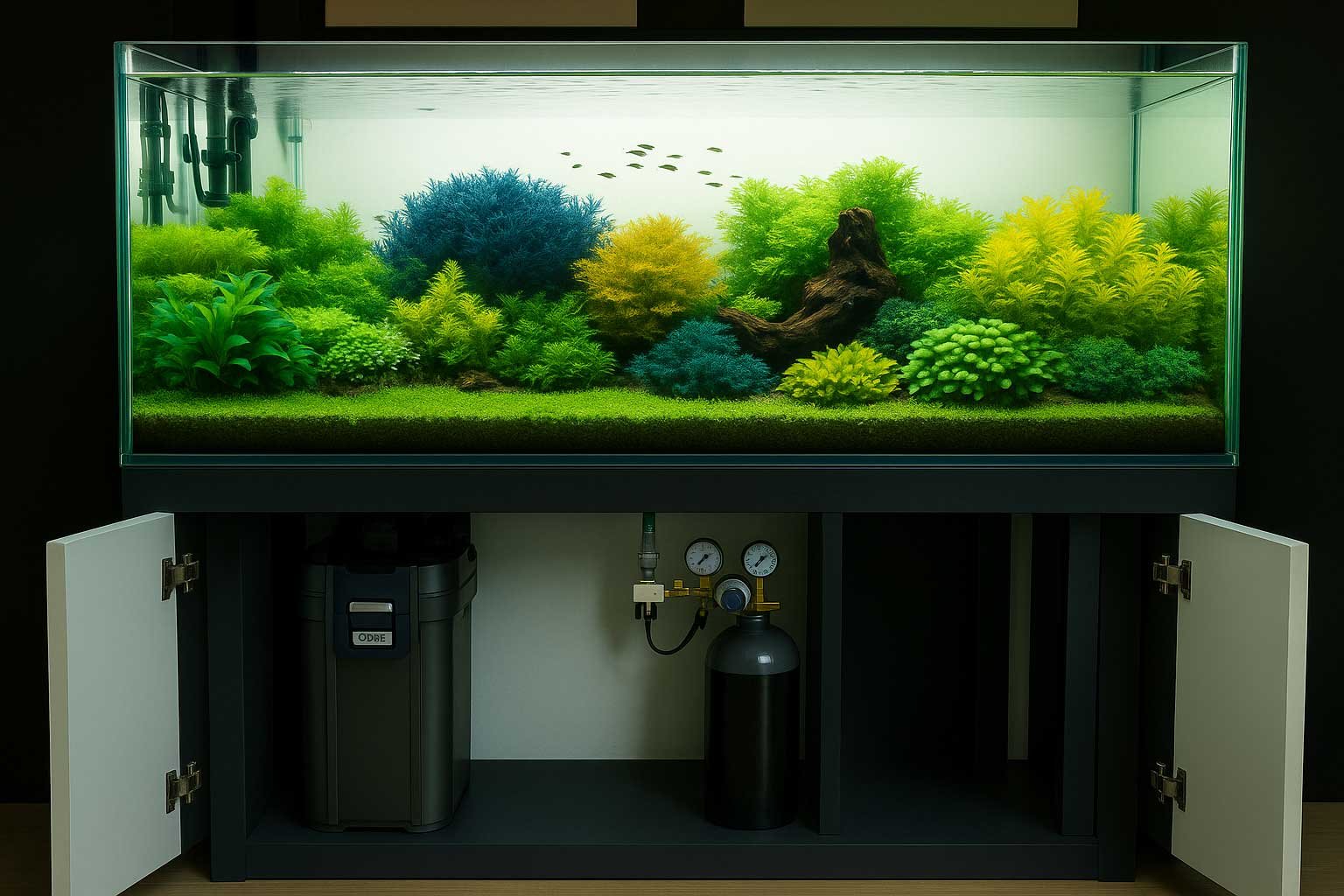
Importance Of Co2 In Aquariums
Maintaining a healthy aquarium is essential for any aquarist, and understanding when to turn on and off CO2 is crucial. CO2 plays a key role in creating a thriving aquatic environment. It is vital for plant growth, which, in turn, helps maintain the overall ecosystem of your aquarium.
Benefits Of Co2
Adding CO2 to your aquarium can offer several benefits. It helps in the photosynthesis process, allowing plants to grow more robustly. Here are some key benefits:
- Enhanced Plant Growth: CO2 promotes healthier and faster plant growth.
- Algae Reduction: Proper CO2 levels can reduce the growth of unwanted algae.
- Improved Water Quality: Healthy plants help maintain better water quality by absorbing nitrates.
- Oxygen Production: Increased plant growth leads to higher oxygen levels, benefiting fish.
In summary, CO2 is essential for creating a balanced and healthy aquarium ecosystem. It not only aids in plant growth but also improves the overall environment for your aquatic life.
Effects On Plant Growth
CO2 has a direct impact on the growth and health of aquatic plants. Plants use CO2 during photosynthesis to produce food and energy. Here are some effects CO2 has on plant growth:
- Increased Photosynthesis: With adequate CO2, plants can photosynthesize more efficiently.
- Faster Growth Rates: Plants grow faster and stronger with sufficient CO2.
- Vibrant Colors: Healthy plants often display more vibrant colors.
- Stronger Roots: Enhanced CO2 levels lead to stronger root systems.
Below is a table showing the difference in plant health with and without CO2:
| With CO2 | Without CO2 |
|---|---|
| Faster growth | Slower growth |
| Vibrant colors | Paler colors |
| Strong roots | Weak roots |
| Less algae | More algae |
Ensuring your plants receive the right amount of CO2 can make a significant difference in their health and appearance. It will lead to a more vibrant and thriving aquarium.
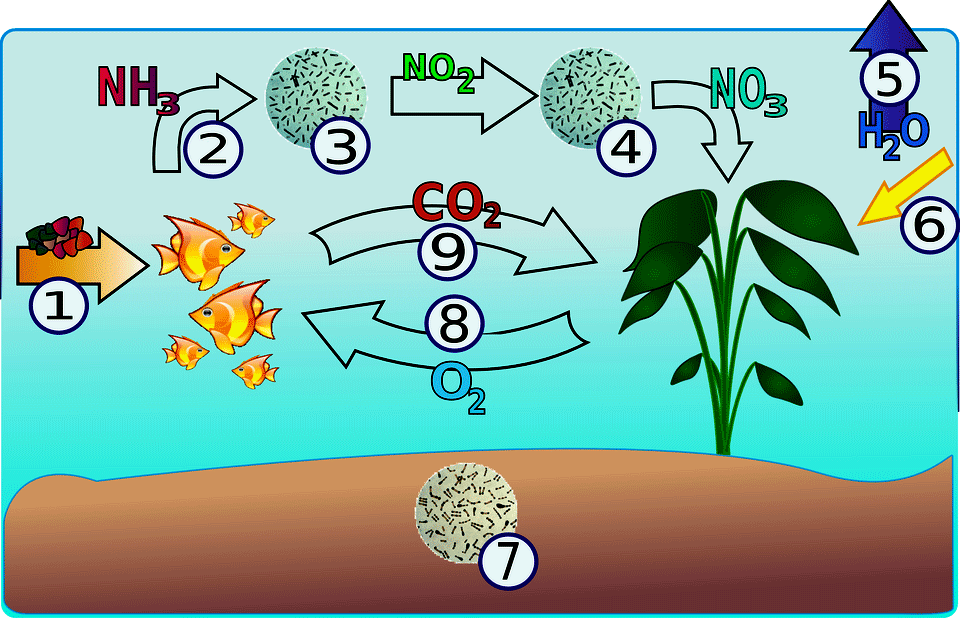
Signs To Turn On Co2
CO2 plays a vital role in aquariums with live plants. It helps plants grow and thrive. Knowing when to turn on CO2 can be tricky. It’s crucial for plant health and balance. You’ll need to watch for signs. Plants and water can give clues. Recognizing these signs ensures a healthy aquatic environment. Let’s explore the indicators for turning on CO2.
Plant Growth Indicators
Plants can tell you a lot about your aquarium’s CO2 needs. Look for these growth indicators:
- Slow Growth: If plants are growing slowly, they may need more CO2.
- Pale Leaves: Yellow or pale leaves can signal CO2 deficiency.
- Weak Roots: Plants with weak root systems often need more CO2.
- Leaf Curling: Leaves curling or twisting might need higher CO2 levels.
Observe your plants closely. Healthy plants should have vibrant colors. Strong roots are a good sign. Leaves should be flat and smooth. If you notice changes, it’s time to adjust CO2. A table might help track these signs:
| Indicator | Possible Cause |
|---|---|
| Slow Growth | CO2 Deficiency |
| Pale Leaves | Lack of CO2 |
| Weak Roots | Low CO2 Levels |
| Leaf Curling | Insufficient CO2 |
Water Parameters To Monitor
Monitoring water parameters is essential. It helps determine CO2 needs. Here are key parameters to watch:
- pH Levels: CO2 affects pH. A drop might mean CO2 is too high. A stable pH is ideal.
- KH (Carbonate Hardness): KH helps buffer pH. Low KH can cause pH swings.
- Oxygen Levels: CO2 can lower oxygen. Ensure oxygen stays balanced.
Use a water test kit. Check pH regularly. Aim for a stable pH level. KH should be in a safe range. It buffers against pH changes. Oxygen levels must be adequate. Ensure plants and fish are healthy. If water parameters fluctuate, adjust CO2. Knowing these signs helps maintain a healthy aquarium. Watch plants and water. They guide CO2 adjustments.
When To Turn Off Co2
Maintaining the right CO2 levels in your aquarium is crucial for the health of both plants and fish. Knowing when to turn off CO2 can help you achieve a balanced and thriving aquatic environment. Let’s explore the key moments when you should turn off CO2 in your aquarium.
During Water Changes
Turning off CO2 during water changes is essential. This prevents CO2 buildup and potential harm to fish. Here’s why:
- CO2 Concentration: When you change the water, the CO2 concentration can spike. This happens because fresh water has different CO2 levels.
- Safety: High CO2 levels can stress fish. They may gasp for air at the surface.
- Stability: Turning off CO2 helps maintain stable conditions. This makes it easier for fish to adapt to new water.
Here’s a simple table to illustrate the steps during a water change:
| Step | Action |
|---|---|
| 1 | Turn off CO2 system. |
| 2 | Remove old water. |
| 3 | Add fresh water. |
| 4 | Wait for water to settle. |
| 5 | Turn CO2 system back on. |
Following these steps ensures a smooth transition during water changes. Your fish will thank you!
For Fish Health
Fish health is paramount in any aquarium setup. Turning off CO2 at night can significantly benefit your fish:
- Oxygen Levels: At night, plants stop photosynthesis. They consume oxygen and produce CO2. This can lead to lower oxygen levels in the water.
- Stress Reduction: High CO2 levels can stress fish. This makes them more prone to diseases.
- Natural Environment: Fish are accustomed to low CO2 levels at night. Mimicking this natural cycle helps them thrive.
Here’s a quick checklist to ensure fish health:
- Turn off CO2 before lights go out.
- Ensure good water circulation.
- Monitor fish behavior regularly.
- Use an air pump if necessary.
These practices help maintain a healthy environment. Your fish will live longer and happier.

Co2 Levels And Fish Compatibility
Managing CO2 levels in your aquarium is crucial for the health of both plants and fish. The question of when to turn CO2 on or off is often linked to the compatibility of CO2 levels with your fish species. Understanding how different fish react to CO2 can help you maintain a balanced and healthy environment. Let’s dive into the details of CO2 levels and fish compatibility.
Species Sensitivity
Fish species differ in their sensitivity to CO2 levels. Some fish can thrive in higher CO2 environments, while others may struggle. Knowing the species-specific sensitivity is vital to prevent stress or harm to your aquatic friends. Here are a few things to consider:
- Cichlids: Generally tolerant to moderate CO2 levels, but excessive amounts can still cause stress.
- Tetras: Sensitive to high CO2, needing careful monitoring to avoid distress.
- Goldfish: Prefer lower CO2 levels, as they are prone to respiratory issues.
- Betta Fish: Require cautious CO2 management due to their labyrinth breathing system.
Understanding these sensitivities helps in adjusting your CO2 system effectively. Here’s a quick reference table:
| Fish Species | CO2 Sensitivity Level |
|---|---|
| Cichlids | Moderate |
| Tetras | High |
| Goldfish | Very High |
| Betta Fish | High |
By keeping these factors in mind, you can tailor the CO2 environment to suit the needs of your fish.
Optimal Co2 Range
Achieving the right CO2 balance is essential for a thriving aquarium. The optimal CO2 range varies depending on the species and plant life in the tank. Here’s a simple guide to help you:
- For planted tanks, aim for a CO2 concentration of 15-30 ppm (parts per million).
- Fish-only tanks should keep CO2 levels on the lower end, around 10 ppm or less.
- Monitor CO2 levels with a reliable test kit or a CO2 indicator.
- Adjust CO2 input based on fish behavior and plant growth.
Regular observation is key. Watch for signs of distress in your fish, such as gasping at the surface or sluggish movement. These can indicate CO2 levels are too high. Use the following table as a guideline:
| Aquarium Type | Optimal CO2 Range (ppm) |
|---|---|
| Planted Tank | 15-30 |
| Fish-Only Tank | 0-10 |
Achieving the right CO2 range promotes a healthy and balanced aquarium environment, ensuring your fish and plants coexist happily.
Adjusting Co2 Levels
Maintaining the right CO2 levels in your aquarium is crucial for the health of your plants and fish. Adjusting CO2 levels ensures your aquatic environment stays balanced and thriving. This guide will help you understand when to turn CO2 on and off in your aquarium.
Using A Co2 Diffuser
A CO2 diffuser is a device that helps distribute carbon dioxide evenly throughout the aquarium. Proper use of a CO2 diffuser can significantly enhance plant growth and overall tank health. To use a CO2 diffuser effectively:
- Place the diffuser at the bottom of the tank. This allows CO2 bubbles to rise and dissolve more efficiently.
- Connect the diffuser to a CO2 system. Ensure all connections are secure to avoid leaks.
- Check the diffuser for clogging. Clean it regularly to maintain optimal performance.
Timing is crucial. Turn on the CO2 diffuser when the lights in your aquarium are on. Plants photosynthesize during the day and use CO2 to grow. Turning CO2 off at night prevents unnecessary CO2 build-up, which can harm fish. Consider using a timer. Setting a timer can automate the CO2 on/off cycle, ensuring consistent CO2 levels. Here is a simple table to help you understand the ideal CO2 timing:
| Time | CO2 Diffuser Status |
|---|---|
| Day (Lights On) | Turn On |
| Night (Lights Off) | Turn Off |
Monitoring Ph Changes
Monitoring pH changes is essential when adjusting CO2 levels. CO2 can lower pH, which affects the health of your aquarium’s inhabitants. To monitor pH changes:
- Use a reliable pH meter. Digital pH meters provide accurate readings.
- Test pH levels regularly. Aim to check pH at least once a day.
- Keep a log of pH readings. Tracking changes over time helps spot trends and make necessary adjustments.
Ideal pH levels vary for different species. Generally, aim for a pH between 6.5 and 7.5 for most freshwater tanks. If pH drops too low:
- Reduce CO2 input. Lower the CO2 flow rate or shorten the CO2 on-time.
- Increase aeration. More oxygen can help balance the pH.
Maintaining stable pH levels ensures a healthy environment for both plants and fish. Here is a simple table showing pH impact with CO2 adjustments:
| CO2 Level | pH Change |
|---|---|
| High | Lower pH |
| Low | Stable pH |
Regular monitoring and adjustments ensure your aquarium remains a balanced and healthy ecosystem.
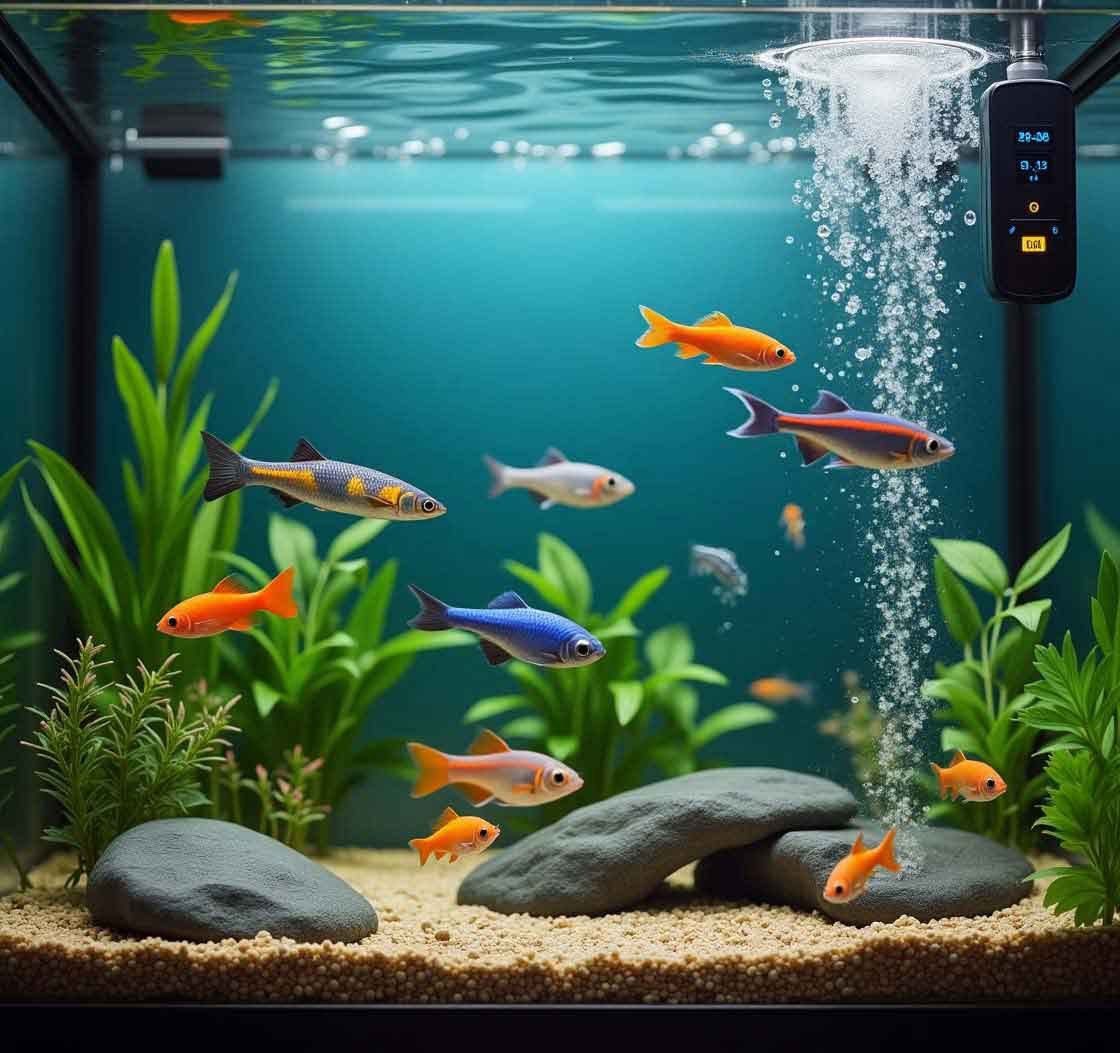
Common Mistakes With Co2
Using CO2 in your aquarium can greatly benefit plant growth. However, many aquarists make common mistakes that can harm their fish and plants. Understanding when to turn CO2 on and off is crucial. Let’s explore some common mistakes with CO2 usage.
Overdosing Co2
Overdosing CO2 is a frequent error among aquarium enthusiasts. Too much CO2 can lead to several issues:
- Fish suffocation: High levels of CO2 reduce the oxygen available for fish.
- pH swings: Excessive CO2 can cause drastic changes in pH levels.
- Plant damage: While plants need CO2, too much can be harmful.
To avoid these problems, follow these guidelines:
- Start with a low CO2 dosage and gradually increase.
- Use a CO2 drop checker to monitor levels.
- Ensure proper aeration to balance oxygen and CO2.
Here’s a simple table to help you understand CO2 levels:
| CO2 Level (ppm) | Effect |
|---|---|
| 0-10 | Low, poor plant growth |
| 10-30 | Optimal for plants |
| 30+ | Risk of fish suffocation |
It’s essential to find the right balance. Overdosing CO2 can be detrimental, so careful monitoring is key.
Ignoring Fish Behavior
Fish behavior can be a clear indicator of CO2 issues. Ignoring these signs can lead to serious problems:
- Gasping at the surface: This suggests low oxygen levels due to high CO2.
- Erratic swimming: Fish may struggle to breathe.
- Lethargy: Fish may become inactive and appear sick.
Pay close attention to your fish. Their behavior can tell you a lot about the CO2 levels in your aquarium. To ensure your fish are comfortable:
- Observe fish daily for any unusual behavior.
- Adjust CO2 levels if fish appear stressed.
- Use an air stone to increase oxygen.
Here’s a quick reference table for fish behavior and potential CO2 issues:
| Fish Behavior | Potential CO2 Issue |
|---|---|
| Gasping at surface | High CO2, low oxygen |
| Erratic swimming | CO2 overdose |
| Lethargy | CO2 stress |
Monitoring fish behavior is crucial. Adjusting CO2 levels based on their actions can prevent many problems.
Best Practices For Co2 Management
Proper CO2 management is crucial for a healthy aquarium. Knowing when to turn the CO2 on and off can make all the difference for your aquatic plants and fish. This guide will help you understand the best practices for CO2 management in your aquarium. By following these practices, you can ensure a balanced environment for your underwater ecosystem.
Regular Testing
Testing the CO2 levels in your aquarium is essential. It helps you maintain the right balance for your plants and fish. Regular testing ensures that CO2 levels remain stable, preventing any adverse effects. Here are some key points to consider:
- Frequency: Test your CO2 levels at least once a week.
- Tools: Use reliable CO2 test kits available in pet stores.
- Indicators: Look for signs of CO2 imbalance, such as fish gasping at the surface or yellowing plants.
Maintaining the right CO2 levels involves monitoring the pH levels. CO2 affects the pH of the water, and keeping an eye on pH can give you clues about CO2 levels. Here’s a simple table to help you understand the relationship between CO2 and pH:
| CO2 Level (ppm) | pH (Range) |
|---|---|
| Low | Above 7.5 |
| Optimal | 6.5 – 7.5 |
| High | Below 6.5 |
By regularly testing and monitoring these factors, you can ensure a healthy and balanced aquarium environment.
Using Timers For Automation
Automation can be your best friend in maintaining the right CO2 levels. Using timers for your CO2 system can help you control the CO2 injection precisely. Consider the following points for effective CO2 automation:
- Set Up: Connect your CO2 system to a reliable timer.
- Timing: Synchronize the CO2 injection with the aquarium lights. CO2 should be on when the lights are on.
- Consistency: Ensure the CO2 timer follows a consistent daily schedule.
Here’s a simple schedule to follow:
| Time | Action |
|---|---|
| 8:00 AM | CO2 On |
| 8:00 PM | CO2 Off |
This schedule ensures that CO2 is available during the day when plants need it most for photosynthesis. At night, turning off the CO2 prevents unnecessary waste and keeps your fish safe. Incorporating timers into your CO2 system makes maintenance easier and ensures a healthier environment for your aquarium inhabitants. Automated systems reduce the risk of human error and provide peace of mind.
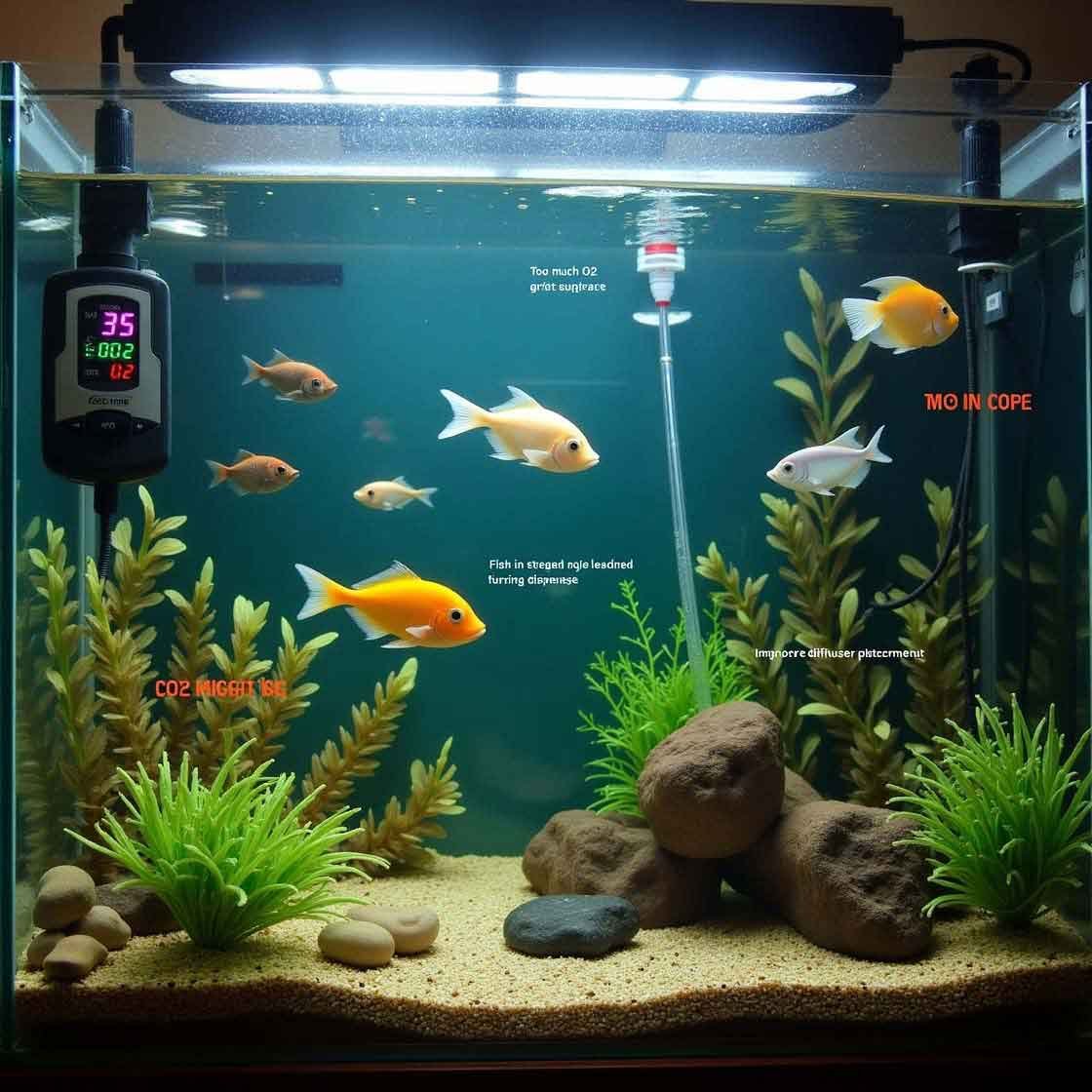
Expert Tips For Success
When managing CO2 in your aquarium, timing is key. CO2 helps plants grow, but too much or too little can harm fish and plants. To master CO2 usage, follow these expert tips for success.
Consulting Aquatic Specialists
Consulting aquatic specialists is crucial for understanding the right CO2 balance in your aquarium. Specialists can provide tailored advice based on your tank’s specific needs. Here are some reasons to consult them:
- Customized Solutions: Every aquarium is unique. Specialists analyze your tank’s size, plant types, and fish species to recommend the best CO2 schedule.
- Preventing Algae Growth: Incorrect CO2 levels can lead to algae problems. Experts help maintain the right balance to keep your tank healthy.
- Monitoring Water Parameters: Specialists can guide you on how to monitor pH, temperature, and other water parameters that affect CO2 absorption.
To find a reliable aquatic specialist:
- Research local aquarium shops and online forums.
- Ask for recommendations from other hobbyists.
- Check credentials and reviews before making a decision.
Here is a quick reference table for consulting specialists:
| Specialist Type | Services Offered | Contact Method |
|---|---|---|
| Aquarium Shop Expert | CO2 setup guidance, water testing | In-person, phone |
| Online Consultant | Virtual consultations, email support | Video call, email |
| Experienced Hobbyist | Practical tips, troubleshooting | Forums, social media |
Joining Aquarium Communities
Joining aquarium communities can be incredibly beneficial for managing CO2 in your tank. These communities offer support, advice, and shared experiences. Here are some advantages:
- Peer Support: Fellow hobbyists can provide practical advice and share their CO2 management experiences.
- Access to Resources: Communities often have guides, articles, and videos on CO2 usage.
- Problem-solving: If you face issues with CO2, community members can help troubleshoot and find solutions.
To get involved in aquarium communities:
- Join online forums like Aquarium Central or FishTankNetwork.
- Participate in social media groups on Facebook or Reddit.
- Attend local aquarium club meetings and events.
Here is a quick reference table for joining communities:
| Community Type | Benefits | How to Join |
|---|---|---|
| Online Forums | Expert advice, troubleshooting | Register on website |
| Social Media Groups | Peer support, resource sharing | Join group on platform |
| Local Clubs | Networking, events | Attend meetings |
Frequently Asked Questions
When Should I Turn Off Co2 In My Aquarium?
You should turn off CO2 at night when plants are not photosynthesizing. This prevents CO2 buildup which can harm fish.
Is Co2 Necessary In All Aquariums?
CO2 is not necessary in all aquariums. It’s mainly required for planted tanks to promote plant growth and health.
How Long Should Co2 Run In An Aquarium?
CO2 should run for about 8-10 hours daily. Typically, it starts one hour before lights on and stops one hour before lights off.
Can Too Much Co2 Harm My Fish?
Yes, too much CO2 can harm fish. It can cause stress and suffocation. Always monitor CO2 levels closely.


